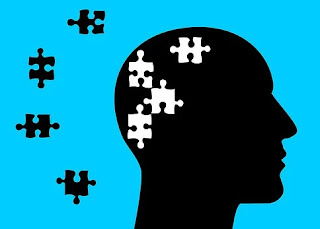Post Traumatic Stress Disorder or PTSD is getting a lot of attention in modern times. However, there is a need to focus on another similar condition, complex post-traumatic stress disorder. It is not very commonly heard about. So, we are explaining it here in detail to help our readers understand it better.
What is PTSD, and How it Differs from Complex
PTSD?
In simple words, PTSD is a mental health
disorder that occurs due to a traumatic
event. This condition seriously affects a person's relationships and can
often be linked to depression, eating disorders, substance abuse, and even
suicidal behavior.
In complex PTSD, the trauma is not a
one-off event. Instead, it is something that is or was repeated and sustained.
Examples include domestic abuse, child abuse, and torture. In addition to the
common symptoms of PTSD, the symptoms of complex PTSD are different.
In 2019, complex PTSD was officially
recognized as a diagnosis in the World Health Organization's diagnostic bible,
the International Classification of Diseases (ICD-11).
Key Symptoms of Complex PTSD
Some of the common symptoms of PTSD include
but are not limited to:
Ø Difficulty controlling your emotions
Ø Feelings of shame or guilt
Ø Cutting yourself off from friends and family
Ø Relationship difficulties
Ø Physical symptoms include headaches, stomach aches, dizziness, chest
pains, etc.
Ø Destructive or risky behavior, such as self-harm, alcohol misuse, or
drug abuse
Ø Suicidal thoughts
Causes of Complex PTSD
The key causes of complex PTSD are usually
severe and repetitive forms of abuse that stretch over a long time. It can
create lifelong challenges and can have several effects on the brain. Some of
the reasons why people get complex PTSD are:
Ø Domestic violence
Ø Child abuse, neglect, or abandonment
Ø Genocide
Ø Torture
Ø Childhood soldiering
Ø Slavery
In most of these situations, the victimized
person is totally controlled by another person and cannot escape easily.
Treatment of Complex PTSD
People who experience complex PTSD are
often given the same treatment as those with PTSD. Some treatments can be
successful if extra therapies and more intensive support back them.
Two common treatments offered to complex
PTSD patients are Trauma-focused cognitive behavioral therapy (CBT) and
eye-movement desensitization and reprocessing (EMDR). The former includes 8-12
weekly sessions where a person is taught how trauma can affect their body and
how to deal with symptoms like flashbacks by using certain techniques.
In the latter, 8-12 sessions are used
wherein a person will try thinking about details of the trauma while making eye
movements. It is usually done by following the movement of a therapist's
finger.
Both these treatments can be quite
distressing as they involve thinking about the trauma.
Sometimes, treatments are used in
conjunction with physical therapy to get better results. People who have PTSD often
don't trust people easily. So, one needs to have more therapy sessions to
ensure that they have ample time to trust a therapist. Even after the treatment
ends, patients often need ongoing support and might need multiple treatments
over a long period.
Sources:
https://theconversation.com/complex-post-traumatic-stress-disorder-explained-181512
https://www.nhs.uk/mental-health/conditions/post-traumatic-stress-disorder-ptsd/complex/
https://www.verywellmind.com/what-is-complex-ptsd-2797491



